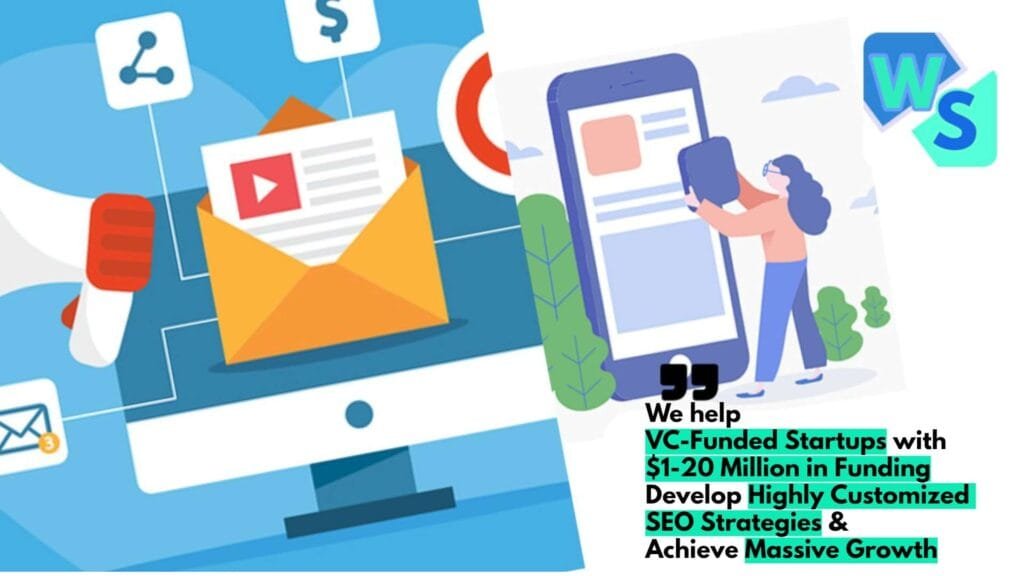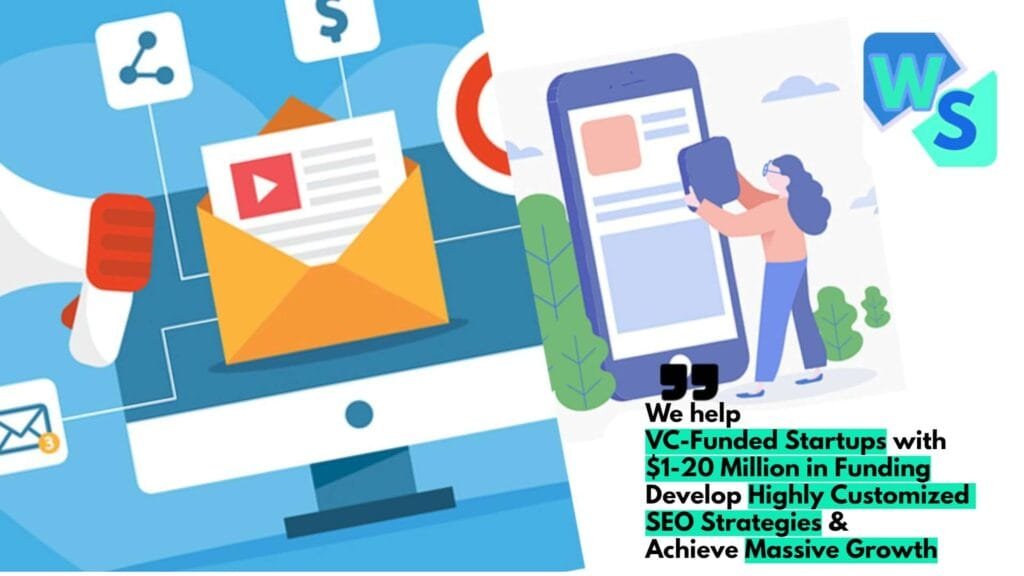Developing Effective Marketing Campaigns
Power of Storytelling in Marketing
In the realm of marketing, storytelling emerges as a powerful tool that captivates audiences and fosters emotional connections. Effective storytelling has become crucial in today’s fast-paced and competitive marketing landscape. Brands such as Disney and industry visionaries like Steve Jobs have successfully utilized storytelling in their marketing strategies to build strong brand loyalty and engage their audiences (Single Grain).
Research indicates that stories are remembered 22 times more than mere facts and figures, emphasizing the significance of incorporating narratives into content to enhance conversion rates (Single Grain). By crafting compelling stories, marketers can convey their brand messages in a way that resonates with consumers, driving not just interest but also loyalty and recommendations.
Importance of Relatability in Brand Stories
Relatability plays a crucial role in storytelling as it encourages audiences to connect with brands on a personal level. When consumers see their own experiences, challenges, or aspirations reflected in a brand’s narrative, it fosters a stronger bond, leading to increased engagement, customer loyalty, and higher conversion rates (Single Grain).
Structured storytelling, which integrates developed characters and conflicts while attending to rhythm and pacing, aims to engage audiences through relatable narratives (New York Times Licensing). By creating scenarios and characters that reflect the diversity and uniqueness of your target market, you can effectively communicate your brand’s values and offerings.
For additional insights on successful approaches in marketing campaigns, you may explore examples of marketing campaigns examples or dive into storytelling in marketing campaigns.
Crafting Compelling Narratives
In today’s competitive market, crafting compelling narratives is essential for successful marketing campaigns. By utilizing effective storytelling techniques, you can engage your audience, foster emotional connections, and drive conversions.
Utilizing the Harmon Circle Framework
The Harmon Circle Framework is a powerful storytelling tool that can help you structure your narratives. This framework emphasizes the importance of character development, conflict, and resolution. When your audience can relate to the characters and their struggles, they become more invested in the story and are likely to engage with your brand.
In implementing the Harmon Circle Framework, consider these key elements:
| Element | Description |
|---|---|
| Setup | Introduce the characters and the initial situation. |
| Conflict | Present challenges or obstacles the characters face. |
| Climax | Highlight the turning point where tension reaches its peak. |
| Resolution | Show how the conflict is resolved, leading to a satisfying conclusion. |
Successful brands like Disney and visionaries such as Steve Jobs have utilized this type of storytelling in their marketing strategies to build strong brand loyalty and emotional connections with their audiences (Single Grain).
Persuasion through Storytelling
Effective storytelling goes beyond simply sharing facts. Research indicates that stories are remembered 22 times more than facts and figures, which underscores the power of narrative in marketing (Single Grain). By incorporating stories into your campaigns, you can capture your audience’s attention and significantly boost conversion rates.
Relatability plays a crucial role in persuasive storytelling. By presenting scenarios that resonate with your audience, you create a deeper emotional connection. This connection can lead to increased engagement, customer loyalty, and ultimately, higher conversion rates. Structured storytelling incorporates developed characters, conflicts, and a keen attention to rhythm and pacing, all aiming to maintain audience interest and facilitate connection.
In your next marketing campaign, aim to embody these principles of storytelling. For more insights and examples, consider exploring our resources on storytelling in marketing campaigns and marketing campaigns examples.
Innovations in Video Marketing
As your organization seeks to engage audiences more effectively, understanding the latest innovations in video marketing will be essential. Two particularly noteworthy advancements are volumetric video technology and interactive video elements.
Volumetric Video Technology
Volumetric video technology is transforming how you can present content to your audience. This technology captures video in immersive 3D, allowing viewers to experience content from various angles and perspectives. The enhanced engagement facilitates a more interactive interaction, which can significantly improve brand connection and viewer retention (Frenik Labs).
The versatility of volumetric video can be illustrated in the following table:
| Feature | Impact on Marketing |
|---|---|
| Immersive Experience | Enables a deeper viewer connection |
| Multi-Angle Views | Highlights product details effectively |
| Enhanced Interactivity | Promotes viewer engagement and retention |
Interactive Video Elements
Interactive videos are becoming a critical tool in modern marketing strategies. These videos incorporate elements that allow viewers to click, tap, or swipe, thus engaging them actively in the content. This format enables personalized experiences such as choose-your-own-adventure stories or integrated quizzes, providing valuable insights into your audience’s preferences and behaviors.
The benefits of interactive video elements can be summarized as follows:
| Interaction Type | Benefits |
|---|---|
| Quizzes | Gather audience insights |
| Decision Points | Customize viewer experience |
| Clickable Elements | Drive specific actions easily |
Both volumetric video technology and interactive video elements present invaluable opportunities to enhance your creative marketing campaign ideas. For further exploration of innovative strategies, consider reviewing our articles on integrated marketing campaign examples and best marketing campaigns 2022.
Enhancing Engagement with Shoppable Videos
As marketing strategies evolve, shoppable videos present a unique opportunity to combine entertainment and commerce. This innovative approach enhances viewer engagement, ultimately driving sales.
Seamless E-commerce Integration
Shoppable video technology is designed to integrate e-commerce seamlessly into your video content. This feature allows for product tagging within the video, enabling viewers to click on items they are interested in without leaving the video platform. The result is a frictionless shopping experience that transforms passive viewers into active consumers, allowing you to maximize your marketing efforts (Frenik Labs).
The table below illustrates how shoppable videos can enhance user engagement:
| Feature | Benefit |
|---|---|
| Product Tagging | Viewers can buy products while watching the video |
| Integrated Transactions | No need to exit the video for purchases |
| Enhanced Viewing Experience | Keeps viewers engaged with interactive content |
Instant Transactions within Videos
The ability to facilitate instant transactions within videos is a game-changer for marketing campaigns. Shoppable video technology offers viewers the convenience of making purchases directly within the video. This feature enhances the overall viewing experience while driving immediate sales (SmartBizLoans).
This capability is particularly effective in demonstrating products, as viewers can see the item in use and immediately understand its value. When an opportunity to purchase arises seamlessly within the context of engaging content, conversion rates can significantly increase.
The following table summarizes the immediate benefits of instant transactions in shoppable videos:
| Benefit | Description |
|---|---|
| Increased Conversion Rates | Facilitates quick purchases without distractions |
| Enhanced Customer Experience | Users enjoy a more interactive shopping experience |
| Immediate Feedback Opportunity | Brands can assess product appeal in real-time |
Incorporating shoppable videos into your marketing strategy can transform the way customers interact with your brand. For further insights on effective marketing techniques, consider exploring our marketing campaigns examples or the potential of integrated marketing campaign examples.
Leveraging Artificial Intelligence (AI)
In the evolving landscape of marketing, utilizing Artificial Intelligence (AI) can significantly enhance your creative marketing campaign ideas. Two prominent applications of AI in marketing include AI video generation and personalized content creation.
AI Video Generation
AI video generation is transforming how brands create dynamic ads, tutorials, and informative content. This technology enables the automated production of videos from various inputs, such as text, images, and audio. By leveraging AI, you can streamline your video marketing process, enhancing customer engagement and opening up new revenue opportunities for your brand. According to Frenik Labs, this innovative approach not only saves time but also allows you to produce high-quality content that resonates with your audience.
| Feature | Description |
|---|---|
| Automated Generation | Creates videos from text, images, and audio automatically. |
| Time Efficiency | Reduces production time significantly. |
| Customization | Allows for tailored content based on customer preferences. |
| Cost-Effectiveness | Decreases reliance on extensive video production teams. |
Personalized Content Creation
Personalized content creation is another vital aspect of leveraging AI in marketing campaigns. AI can analyze customer data and preferences to generate unique content that speaks directly to individual users. This personalized approach not only enhances customer loyalty but also fosters deeper connections between the brand and its audience.
For instance, brands can create content that shares customer tips, DIY fixes, or even features showcasing products in action. This strategy adds authenticity to your marketing and positions your customers as experts, which can be instrumental in building a loyal customer base (Forbes).
| Benefit | Description |
|---|---|
| Increased Engagement | Personalized content resonates more with audiences. |
| Customer Loyalty | Fosters a sense of belonging among customers. |
| Authentic Marketing | Enhances brand image by showcasing real customer experiences. |
| Enhanced Reach | Tailored messaging can increase the effectiveness of campaigns. |
By implementing AI technologies for video generation and personalized content, you can significantly improve your marketing strategies. Staying informed about tools and trends in AI will help ensure that your campaigns remain at the forefront of innovation. For more insights on effective marketing strategies, explore our articles on marketing campaigns examples and digital marketing campaign strategies.
The Impact of Live Video
In the realm of creative marketing campaign ideas, live video has emerged as a powerful tool that can significantly enhance audience engagement. This format offers both authentic interactions and the opportunity to build stronger relationships between brands and consumers.
Real-Time Engagement Opportunities
Live video provides authentic real-time engagement opportunities for brands, allowing for interactive product launches, Q&As, and behind-the-scenes access that resonate deeply with viewers (Frenik Labs). This immediacy encourages consumers to participate actively rather than passively receiving information.
Here are some significant statistics that demonstrate the impact of live video on engagement:
| Feature | Impact |
|---|---|
| Increased viewer interaction | 80% of consumers prefer live video to social posts |
| Boost in engagement rates | Live video tends to have 6x more interactions than recorded video |
| Higher retention rates | Viewers retain 95% of a message when watching live video compared to 10% for text |
Implementing live video in your marketing strategy creates avenues for genuine communication and allows brands to showcase their personalities, making them more relatable and trustworthy.
Genuine Connections with Viewers
Live video fosters genuine connections with viewers by providing them with an unfiltered look into the brand’s culture and values. These interactions create a sense of intimacy between the brand and their audience, enhancing loyalty and trust. By engaging in real-time conversations, brands can address consumer questions instantly, thereby reducing ambiguity and enhancing customer satisfaction.
Moreover, live video can adapt to various formats, allowing brands to explore different engagement strategies effectively. Below are some successful live video applications:
| Application | Description |
|---|---|
| Product Launches | Directly showcase new products in action, encouraging immediate feedback. |
| Customer Q&As | Provide answers to frequently asked questions, showcasing attentiveness to consumer concerns. |
| Behind-the-Scenes Access | Offer viewers an exclusive glimpse of the company’s day-to-day activities, personifying the brand. |
Incorporating live video as a critical aspect of your marketing campaigning strategy can significantly expand your outreach and deepen your connection with your audience. For further insights on how to implement effective campaigns, explore our guides on marketing campaigns examples and integrated marketing campaign examples.
Successful Social Media Campaign Examples
In the realm of creative marketing campaign ideas, leveraging social media effectively can lead to remarkable brand success. Two effective strategies include User-Generated Content (UGC) approaches and creating viral social media campaigns.
User-Generated Content (UGC) Strategies
User-generated content is a powerful tool for modern marketing campaigns. By tapping into the genuine experiences and creativity of your existing customers, you can create authentic and relatable content that resonates with new audiences. A noteworthy example is Applebee’s, which utilized viral UGC with TikTok videos to capture spontaneous content, such as the viral song “Fancy Like” by Walker Hayes. This strategy not only enhanced brand visibility but also increased customer engagement (Forbes).
Here are several advantages of implementing UGC strategies:
| Benefit | Description |
|---|---|
| Authenticity | UGC provides genuine customer perspectives, showcasing real experiences. |
| Increased Engagement | Engaging customers in content creation encourages community involvement. |
| Cost-Effective | Utilizes existing customer content, reducing the need for expensive production. |
Testimonial videos created by your users can serve as valuable digital assets across various platforms, including websites and social media. It is essential to secure legal rights for any user-generated content used to avoid potential copyright issues (Forbes).
Viral Social Media Campaigns
Viral campaigns often capture the imagination of a broader audience, leading to rapid brand growth and visibility. One exceptional instance is Dollar Shave Club, which launched a humorous video that went viral, reaching over 26 million views and resulting in over a million subscribers. The company’s bold and funny approach not only garnered significant attention, but it eventually led to its acquisition by Unilever for $1 billion, underscoring the potential impact of smart social media tactics (SmartBizLoans).
Another example is Roshambo Baby, which saw a major boost in sales and brand awareness through a simple Facebook video that garnered over a million views. This instance emphasizes the effectiveness of organic content on social media platforms, demonstrating how straightforward ideas can flourish with the right audience.
Key characteristics of viral marketing campaigns include:
| Characteristic | Description |
|---|---|
| Shareability | Content must be easily shareable to encourage widespread distribution. |
| Emotional Appeal | Evokes emotions to create stronger connections with viewers. |
| Uniqueness | Stands out from the competition by offering something new or surprising. |
Incorporating both UGC and viral social media strategies into your marketing campaigns can significantly enhance engagement and drive brand awareness. Explore more about effective marketing initiatives in our resources on marketing campaigns examples and integrated marketing campaign examples.
Guerrilla Marketing Strategies
Guerrilla marketing is a strategy that employs unconventional promotion methods to create an impactful presence in the market. This approach focuses on surprise, emotion, and direct engagement, allowing you to stand out from the competition without necessitating a large budget.
Unconventional Promotion Methods
Utilizing guerrilla marketing strategies can be extremely effective for enhancing publicity and brand awareness. The hallmark of these methods is their ability to evoke surprise, wonder, or even shock among your target audience. As outlined by HubSpot, guerrilla marketing was popularized in the early 1980s by Jay Conrad Levinson, who emphasized creativity over conventional financial investment.
These tactics often utilize existing content and creativity for implementation. Some exemplary guerrilla marketing instances include:
| Campaign | Description |
|---|---|
| UNICEF | Used dirty water vending machines to raise awareness of drinking water issues, contrasting the ease of purchasing bottled water with the reality faced by millions lacking access to clean water. |
| Airbnb ‘Night At’ | Offered unique overnight experiences in iconic locations, such as the Louvre Museum and Dracula’s Castle, aimed at providing immersive cultural experiences. |
These promotions can effectively appeal to consumers’ emotions, improve brand image, and build strong relationships, while also creating content that is catchy and shareable.
Types of Guerrilla Marketing
There are several types of guerrilla marketing techniques you can consider for your campaigns. These include:
- Ambush Marketing: Taking advantage of an event to promote a product, even if you’re not a sponsor.
- Experiential Marketing: Creating immersive experiences that allow consumers to engage directly with your brand.
- Street Marketing: Utilizing public spaces for promotions, such as flash mobs or art installations that capture attention.
- Viral Marketing: Creating engaging content that encourages shares and interaction across social media platforms.
These tactics rely on creativity and strategic planning rather than financial resources. By considering your audience and leveraging emotions, you can create memorable campaigns that resonate with consumers. For more information on related strategies, explore our article on marketing campaigns examples and guerrilla marketing campaign tactics.
Building Trust with User-Generated Content
User-Generated Content (UGC) has become a cornerstone of modern marketing strategies. For business-to-business (B2B) brands, leveraging UGC can significantly enhance market presence and cultivate deeper connections with audiences.
Benefits for B2B Brands
Utilizing user-generated content offers numerous advantages for B2B companies, including:
| Benefit | Description |
|---|---|
| Trust and Authenticity | UGC fosters trust among prospective clients by showcasing genuine experiences from existing customers. This authenticity is crucial in B2B relationships where trust plays a fundamental role. |
| Enhanced Engagement | Inviting clients to share their experiences can yield creative content that resonates with potential customers, encouraging active engagement with the brand. |
| Amplified Brand Voice | UGC helps in amplifying the brand message organically within the social narrative, providing an avenue for existing customers to become brand advocates. |
According to research, brands that engage with UGC can effectively boost conversion rates and strengthen brand loyalty Influencer Marketing Hub. The decision to incorporate UGC into your marketing strategy can drive more meaningful interactions and foster a sense of community around your brand.
Collaborative UGC Examples
B2B brands are increasingly adopting UGC in creative ways to deepen client relationships. Here are some exemplary collaborative UGC campaigns:
| Example | Description |
|---|---|
| #AskTheExperts Series | A professional services firm hosts a series of webinars featuring their clients as speakers, sharing success stories and expertise. These sessions not only promote the clients but also establish the firm as a thought leader in the industry. |
| Customer Showcase on Social Media | A software company highlights customer success stories on their social media channels. By asking clients to share their experiences, the company not only showcases its products but also enhances credibility within the community. |
| Collaborative Blogs or Case Studies | A marketing agency collaborates with its clients to create detailed case studies. These pieces feature client insights and showcase partnership successes, allowing both parties to leverage each other’s audiences. |
Using UGC not only differentiates your marketing campaigns but also encourages a culture of collaboration and community building among business partners. Explore more creative marketing campaign ideas in our article on marketing campaigns examples and consider the benefits of integrating UGC into your overall strategy.
Utilizing Technology in Experiential Marketing
In today’s marketing landscape, incorporating advanced technology into experiential marketing campaigns can create immersive and memorable experiences for your audience. This section discusses two key technologies that can enhance your marketing efforts: Augmented Reality (AR) and Virtual Reality (VR).
Augmented Reality (AR) Campaigns
Augmented Reality (AR) offers an innovative way to engage customers by merging digital content with the real world. A notable example is Coca-Cola’s use of AR technology in their holiday marketing campaigns, where users could scan the Coke bottle’s label to see a 3D animation of a holiday-themed polar bear. This interactive experience significantly increased brand engagement and provided a personalized touch to the campaign (The Experiential Network).
Implementing AR technology in your campaigns can involve using smartphone applications or simple scanning tools to activate special content. It allows customers to visualize your products in real-time and often leads to higher interaction rates. Although there are costs associated with AR development, exploring creative alternatives or forming partnerships can help you leverage this trend effectively while maintaining budget considerations.
| Advantages of AR in Marketing | Examples |
|---|---|
| Enhances user engagement | Promotional events with interactive AR experiences |
| Provides personalized experiences | Customized content based on user interactions |
| Facilitates product visualization | Try-before-you-buy experiences for apparel and accessories |
Virtual Reality (VR) Implementations
Virtual Reality (VR) creates entirely immersive environments that transport users to a different world. This gives them the opportunity to experience a brand or product in a uniquely engaging way. Businesses can utilize VR technology in various formats, from VR headsets to interactive installations at events.
The impact of VR on experiential marketing campaigns is significant, as it allows marketers to provide tailored experiences that resonate with individual customer preferences. With immersive storytelling and environments, VR can effectively communicate the essence of your brand. As emerging technologies like VR continue to evolve, their ability to engage customers will expand, making them invaluable tools for marketers.
| Benefits of VR in Marketing | Applications |
|---|---|
| Immersive customer experiences | Virtual showroom or store walkthroughs |
| Increased retention of brand messages | Interactive brand narratives within the VR experience |
| Strong emotional connections with consumers | VR storytelling that connects to user experiences |
By integrating Augmented Reality and Virtual Reality into your marketing campaigns, you can create impactful, memorable experiences that are sure to engage your audience effectively. For further insights into successful marketing strategies, consider exploring our collection of marketing campaigns examples and integrated marketing campaign examples.




















